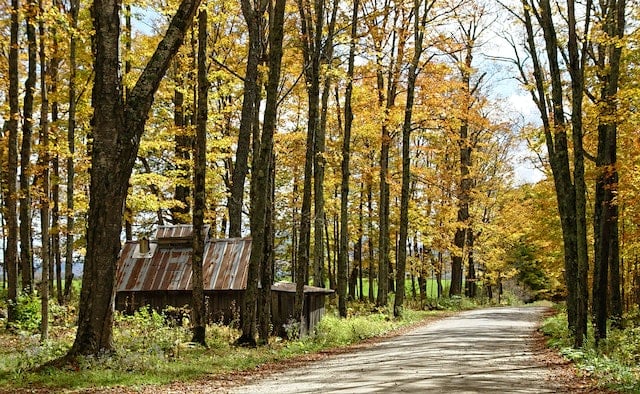English Dialects in America: 4 Distinct American Accents
English dialects in America are an integral part of the rich tapestry of language, shaped by history, geography, and culture. They add flavor and nuance to how we communicate, reflecting the diversity and complexity of the English language.
In the United States, a country known for its melting pot of cultures and regions, there are numerous distinct accents that vary from state to state, and even from city to city.
In this article, we will explore 4 unique English dialects and accents that are distinctive in their pronunciation, vocabulary, and cultural influences.
Table of Contents
→Sign Up Now: Free Trial English Lesson With a Native Teacher!←
Cajun Vernacular English
The most French of all English dialects in Americ
Originating in Louisiana, Cajun Vernacular English is a unique dialect that has its roots in the Acadian French spoken by French Canadian immigrants who settled in the region in the 18th century.
Main features
- French Influences: The Cajun Vernacular English has strong influences from the French language, reflecting the region’s French heritage. This includes French loanwords and expressions that are integrated into everyday English words. For example, words like “cher” (meaning “dear” or “darling”) and “lagniappe” (meaning “a little something extra”) are commonly used in Cajun Vernacular English.
- Vowel Shifts: The Cajun Vernacular English exhibits unique vowel shifts not common in other English dialects in America, where vowels are pronounced differently compared to standard English. For example, the vowel “a” in words like “dance” may be pronounced as “aw,” so it sounds like “dawnce.”
- Consonant Pronunciations: The Cajun Vernacular English may have distinct consonant pronunciations. For example, the “th” sound may be pronounced as “d” or “t,” so “this” may be pronounced as “dis” and “that” may be pronounced as “dat.”
- Intonation and Rhythm: The Cajun Vernacular English has a distinct intonation and rhythm, with a melodic and musical quality to the speech. Sentences may have a rising or falling intonation pattern, and speech may have a relaxed and laid-back rhythm. These features make Cajun the most musical of all English dialects in America.
Cajun slang
- Alohrs pas: of course not
- Beb: darling, sweetheart
- Cro-cros: big, clunky shoes
- Domion: a peeping Tom
- Ga lee: an expression of shock or surprise
- Hot, hot: Very hot (some adjectives are said twice to mean “very”)
- Make a bill: do the grocery shopping
New England English
The most British of all English dialects in America
The most British of all English dialects in America, the New England dialect, is also known as the “Boston accent” or “Eastern New England accent”. It is a distinct regional dialect spoken in the northeastern United States, particularly in the New England states of Massachusetts, Connecticut, Rhode Island, Vermont, New Hampshire, and Maine.

Image by William Alexander, via Pexels
Main features
- Non-Rhotic R’s: The New England dialect/accent is known for its non-rhotic R’s, where the “r” sound is not pronounced at the end of a syllable or word. For example, the “r” at the end of “far” may be dropped in New England English, so it is pronounced as “fah.”
- Broad A: The New England dialect/accent often features a distinct pronunciation of the “a” vowel sound, known as the “broad A.” This can result in words like “bath,” “dance,” and “grass” being pronounced with a distinctive “ah” sound, like “bahth,” “dahnce,” and “grahss.”
- Flap T: The New England dialect/accent may have a flap T sound, where the “t” sound between vowels or at the end of words is pronounced as a soft “d” sound. For example, “water” may be pronounced as “waddah” and “butter” may be pronounced as “buddah.”
- Rhythm and Tone: The New England accent has a distinct rhythm and tone, with speech often characterized as brisk, direct, and to the point. There may be a tendency to speak quickly and with a sense of urgency, and the tone may come across as assertive or blunt. As a result, it’s one of the hardest English dialects in America.
New England slang
- Ayuh: Maine’s version of “yup.” This expression is frequently featured in Stephen King books, which are often set in Maine.
- Bang a ’Uey: Making a U-turn after mistakingly passing the spot you were looking for.
- Carriage: shopping cart
- Clicker: remote control
- Creemee: A term for a unique style of soft-serve ice cream popular in Vermont.
- Grinder: a long-boatlike sandwich other people know as a “submarine sandwich” or simply a “sub”.
- Mud Season: The period before the first warm spring days, jokingly referred to as “the fifth New England season”.
Texas English
Texas English: The most laid-back of all American English dialects in America.
Often perceived as one of the slowest English dialects in America Texas English is spoken in the state of Texas and it’s a very distinct type of Southern English.
Main features
- The drawl: The Texas accent is characterized by a distinct drawl, with slow and elongated speech patterns. Vowels are often drawn out, and speech has a relaxed, laid-back quality.
- Consonant Pronunciations: The Texas dialect may exhibit some specific consonant pronunciations, such as a softer “g” sound in words like “running” (pronounced as “runnin'”) and “fishin'” (pronounced as “fishin'”).
- Spanish Influences: Due to Texas’s proximity to Mexico and its history of Spanish colonization, the Texas dialect may also incorporate Spanish loanwords or pronunciations, particularly in areas with a large Hispanic population. For example, the word “tortilla” may be pronounced with a Spanish accent, like “tor-TEE-yah.”
- Monophthongization: In some parts of Texas, particularly in the southern regions, monophthongization may be present. This means that diphthongs (two vowel sounds together) are reduced to a single vowel sound. For example, the word “ride” may be pronounced as “rad.”
Texas slang
- Aint: isn’t
- Howdy: hi
- Neighbor: Usually added after “Howdy” to greet people in a friendly way.
- You are a hoot!: You are hilarious!
- Hot dang: An exclamation of excitement or surprise.
- Y’all come back now: A friendly goodbye phrase
- This ain’t my first rodeo: An expression meaning that you have experience with something.
The New York Accent
The most emphatic of all English dialects in America.
The “New York accent,” is a distinctive regional dialect spoken in the New York City metropolitan area and surrounding regions. Famously portrayed in television shows such as “Friends” or “Seinfeld,” the New York accent is known for its strong and fast-paced delivery.

Image by Roberto Vivancos, via Pexels
Main Features
- Vowel Shifts: The New York dialect/accent is famous for its vowel shifts, where certain vowel sounds have a completely different sound when compared to standard American English. For example, the “O” sound in words like “coffee” and “talk” may have a long “A” sound.
- Nasal Sounds: The New York dialect/accent often features nasal speech, where sounds are produced through the nose, resulting in a distinctive nasal quality to the voice. This can be heard in words like “man” pronounced as “mehn” and “long” pronounced as “lawng.”
- Intensity and Emphasis: The New York dialect/accent is often characterized by its intensity and emphasis, with speech that can be fast-paced, assertive, and animated. There may be a tendency to use strong gestures and facial expressions to convey meaning, and a sense of urgency in communication.
- Unique Vocabulary: The New York dialect/accent may include unique vocabulary that is specific to the region, influenced by the city’s diverse cultural heritage. For example, words like “subway” may be referred to as the “train” or “the subway,” and “slice” may be used to mean a piece of pizza.
New York Slang
- Bodega: A corner store or deli that sells a variety of everyday items.
- Cabbie: A taxi driver.
- Fuhgeddaboudit: A phrase used to express disbelief or to dismiss something as not worth considering.
- The City: Referring to Manhattan, the main borough of New York City.
- Dollar slice: A slice of pizza that costs only one dollar, often sold at inexpensive pizzerias in New York City.
- Bridge and Tunnel: Referring to people who live outside of Manhattan and commute into the city via bridges or tunnels.
- Kid: A caring term used to refer to a close friend.
To sum up, the English dialects of America are as varied and diverse as the country itself. From Texas to New York, different regions of America have their own unique accents, vocabulary, and slang that reflects their unique culture and heritage. Therefore, it is important to be aware of the different dialects when traveling and communicating in the United States.
→Sign Up Now: Free Trial English Lesson With a Native Teacher!←
At Listen & Learn, we work with native teachers from every region in the country so that our students can learn the variety of American English that they need. So, whether you’re aiming to learn the Southern drawl of Texas or the unique slang of New York City, we can help!
So, which of all English dialects in America will you learn today?
All you have to do is send us a quick message and we’ll arrange a customized English lesson for free so you can try our services with no strings attached.


